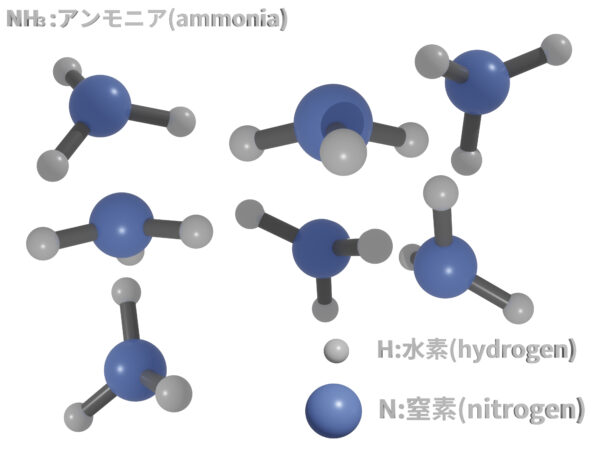On January 10, Recharge, a portal site for news covering the transition to renewable energy, released the article ‘Crazy, wasteful greenwash’: Japan to spend $242m on mixing hydrogen-derived ammonia with coal at power plants. This opinion comes in response to the press release that the Japanese government is to spend ¥27.9bn ($242m USD) on subsidies for two demonstration projects aiming to burn at least 50% ammonia (produced from hydrogen) together with coal at power plants by 2029. It points out that producing ammonia from hydrogen for combustion in coal-fired power plants is a foolish practice that will only waste money, and emphasizes that it amounts to greenwashing.
Two Demonstration Projects
1) Development and Implementation of High-Concentration Ammonia-Pulverized Coal Burners and Single Firing Ammonia Burners
Together with IHI, JERA, Japan’s largest electric power utility, will begin a demonstration project under the Green Innovation Fund program of the New Energy and Industrial Technology Development Organization (NEDO). This project is to develop a burner for co-firing high-concentrated ammonia by 2024, and raise the co-firing rate to at least 50% ammonia at the power plant by FY2028.
2) Development of technology to increase ammonia co-firing rate to 50% and verify ammonia co-firing technology at coal-fired power plants
This is a demonstration project by JERA and Mitsubishi Heavy Industries (MHI) to develop ammonia-firing burners to fit coal-fired boilers and demonstrate its use in actual boilers. Based on the results of the experiment, this project will also determine whether or not this technology is commercially feasible at coal-fired power plants.
Recharge points out that JERA has said nothing about the color (gray/blue/green) of hydrogen used to produce ammonia for burning. What this means is that JERA is not looking into if the ammonia was produced using fossil fuels (gray), if CO2 from ammonia production was captured and stored in the ground to reduce emissions (blue), or if the ammonia was produced from zero-emission renewable energy (green).
Japan’s ammonia strategy
The Japanese government has indicated in the 6th Basic Energy Plan that hydrogen/ammonia-fired power is projected to be 10% of Japan’s energy mix by 2050. It focuses on ammonia as one type of “next generation energy” to contribute to decarbonization. At COP26, Prime Minister Kishida expressed his intention to invest $100 million USD (about 11.5 billion JPY) in a project for the transition to ammonia as fuel in Asia.
PM Kishida has stated that Japan will pursue emission reductions in Asia by co-firing ammonia/hydrogen or other substances to achieve zero emissions from thermal power generation. Additionally, when Minister of Economy, Trade and Industry (METI) Hagiuda toured Southeast Asia in January, he announced that Japan would promote technical cooperation to utilize ammonia/hydrogen for decarbonization. At an online event in Indonesia on January 10, Minister Hagiuda said Japan would “aim to realize a technology that burns only ammonia by 2030.” This is quite a bold statement, considering that JERA, the company proceeding with a demonstration experiment, is aiming to tackle the challenge of zero CO2 emissions in 2050 and begin dedicated ammonia-fired power generation in the 2040s, in its roadmap “Zero Emission 2050”.
Can the use of ammonia for decarbonization gain understanding?
Ammonia is used in chemical production or to make fertilizer, but now development as a fuel is rapidly progressing. It is easier to handle than hydrogen at normal temperatures when under pressure, but the world does not yet have a clear understanding of.the use of ammonia for decarbonization.
Paul Martin, a co-founder of the Hydrogen Science Coalition, a coalition of academics and engineers bringing an evidence-based view on hydrogen’s role in the energy transition, stated that co-firing ammonia at coal-fired power plants is “wasteful greenwash”. He also warned of hype about using hydrogen as fuel, noting that it would be at least five times the cost per joule of energy compared to what Japan’s economic competitors will be using to fuel their economies.
Ammonia, which is composed of hydrogen and nitrogen, does not emit CO2 when it is burned. However, there are no methods to mass produce it without emitting CO2, or to recover CO2 emitted during the manufacturing process. Ammonia is currently produced by taking gray hydrogen derived from unabated fossil fuels, and combining it with nitrogen from the air in an energy-intensive process known as Haber-Bosch. The question of how to supply a large amount of ammonia demanded for power generation is still unanswered.
Will using ammonia actually lead to decarbonization?
According to Recharge’s calculations, based on the average coal-fired power plant capacity factor of 53.5%, the ammonia combustion project at Japan’s Hekinan coal-fired power plant would require 1.2 million tonnes of ammonia per year, almost 0.7% of the current annual global supply.
Additionally, producing electricity by burning ammonia is incredibly inefficient. Each ton of green ammonia would require 14.38MWh of energy (8.85MWh of renewable energy to produce the green hydrogen required, and a further 5.53MWh to power the Haber Bosch process with electricity). However, this only generates the equivalent of 5.16MWh when burned, which is reduced to 1.96MWh in a coal-fired power plant with a steam turbine generator efficiency of 38%.
In addition to the production inefficiency of ammonia and the CO2 emissions during production, it is estimated that Japan, which already relies on imports for most of its fuel, would need an amount of ammonia nearly equivalent to the current total world trade volume in order to achieve 20% ammonia co-firing at its coal-fired power plants. JERA and other companies have started working to build an ammonia supply chain, but this would still mean that Japan would be relying on foreign countries for energy.
Japan should develop a roadmap to phase out coal-fired power plants, consider how to secure renewable energy to meet its electricity demand, and focus on expanding domestic renewable energy. If Japan continues to invest a massive amount of money to develop “innovative” technologies that will lead to relying on overseas energy sources, Japan will be left behind as the rest of the world moves on to renewable energy.

